Known for its beautiful architecture and prime location along the Elbe River, Dresden’s Old Town isn’t to be missed! Here are the top attractions in the Altstadt, plus my top tips for your visit.
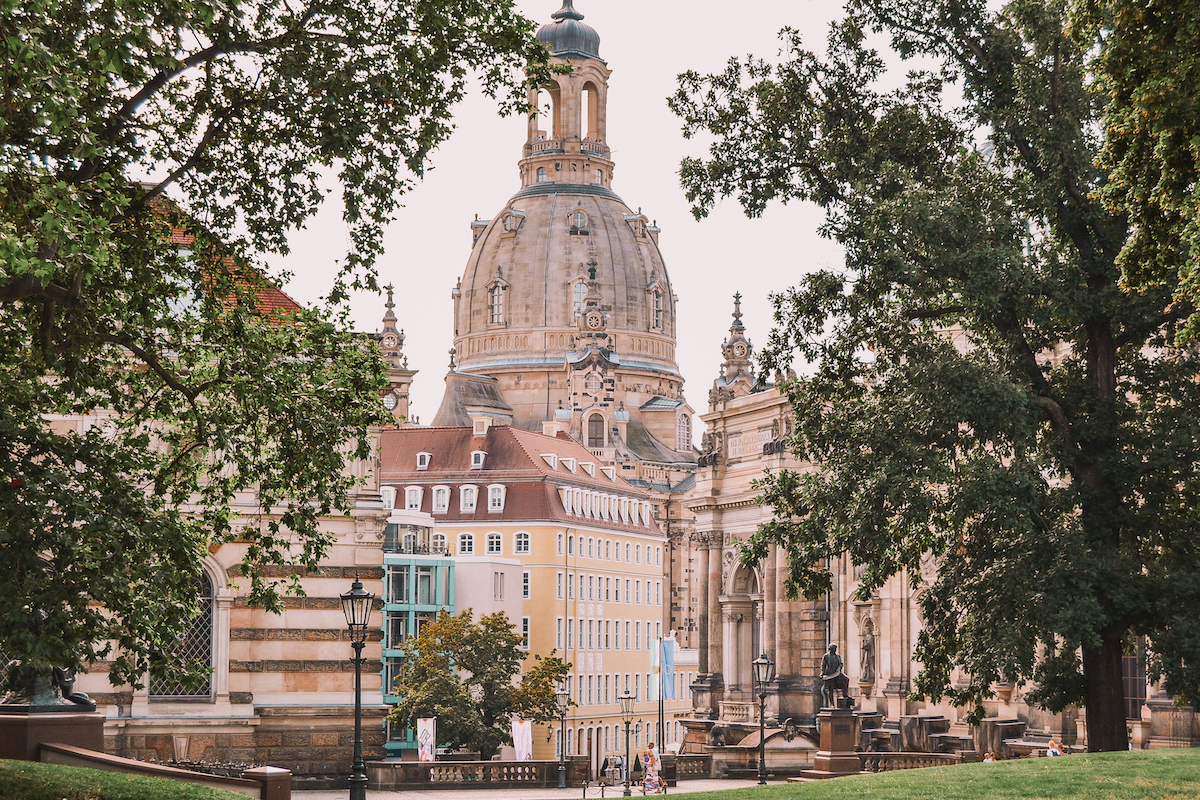
Known as the “Florence on the Elbe,” Dresden is a must-visit city in Germany. How did this German city acquire such a special nickname? Well, it’s mostly thanks to its Old Town (Altstadt), which boasts some of the most stunning architecture in all of Germany.
Dresden’s Altstadt is small, but beautiful. Nestled within the Old Town are some of the city’s top attractions, including the world-renowned opera house, the Royal Palace, the “balcony of Europe,” and the historic Neumarkt, among others.
If you’re lucky enough to visit Dresden during the holidays, much of the Altstadt is filled with Christmas markets from the end of November until the New Year. This area is easily explored on foot, but I recommend wearing sensible shoes since it’s all cobblestone.
Below are the main attractions in Dresden’s Old Town that I recommend visiting during your visit.
Table of Contents
Click “show” to see the full table of contents for this post. You can jump around the post as desired by clicking on the individual sections listed below.
Map of the Dresden Altstadt Attractions
Visit the Zwinger Palace
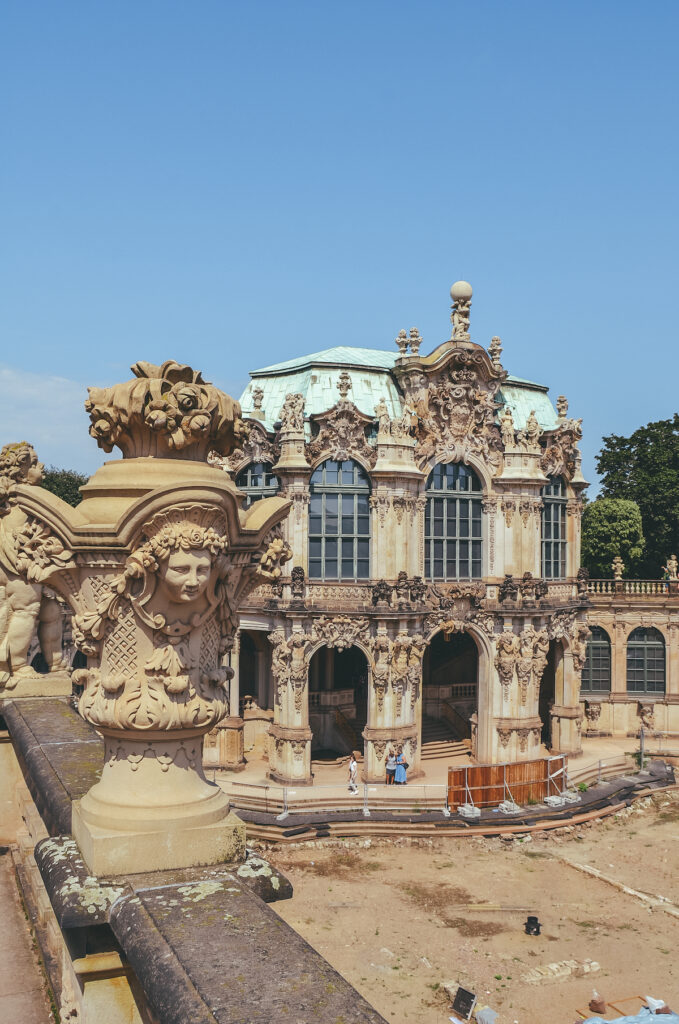
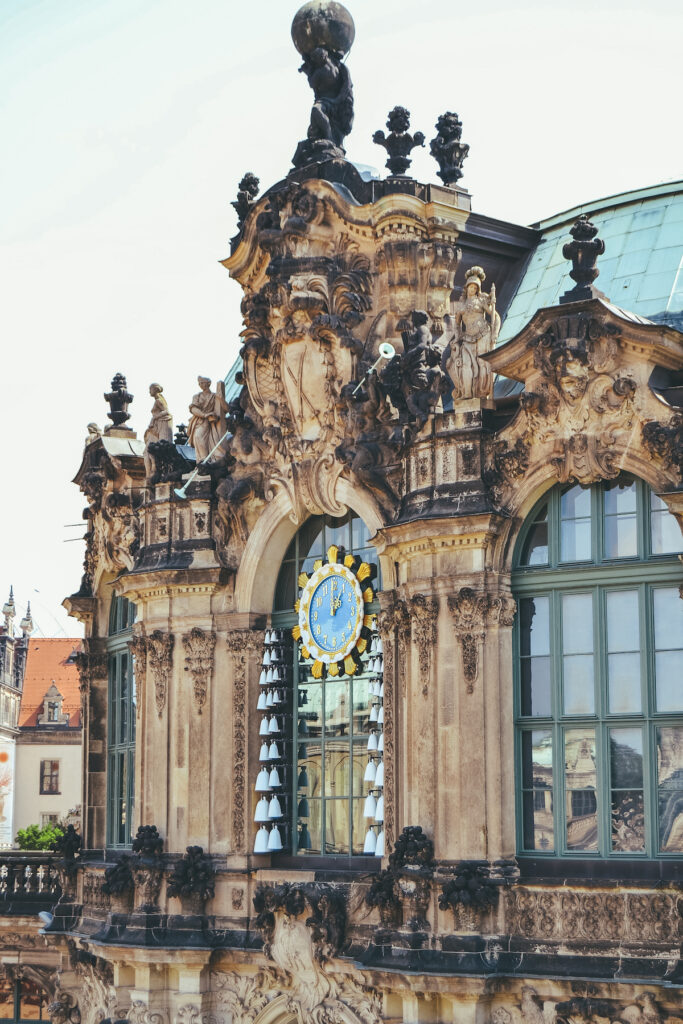
I’m starting this list of Dresden Altstadt attractions with my personal favorite activity — the Zwinger Palace. Built in the Baroque style, the Zwinger was once an exhibition hall and festival grounds for the Dresden court.
It’s now home to three separate museums: the Porcelain Collection, the Mathematisch-Physikalischer Salon, and the Alte Meister art gallery. The three museums are all on the smaller side, which I actually enjoyed since each is so niche (I mean, I love home wares, but I couldn’t spend more than a couple hours looking at porcelain plates).
In addition to the three museums, you can also access the ramparts. From there, you have a lovely view of the palace and can get away from the hustle and bustle of visitors in the gardens below.
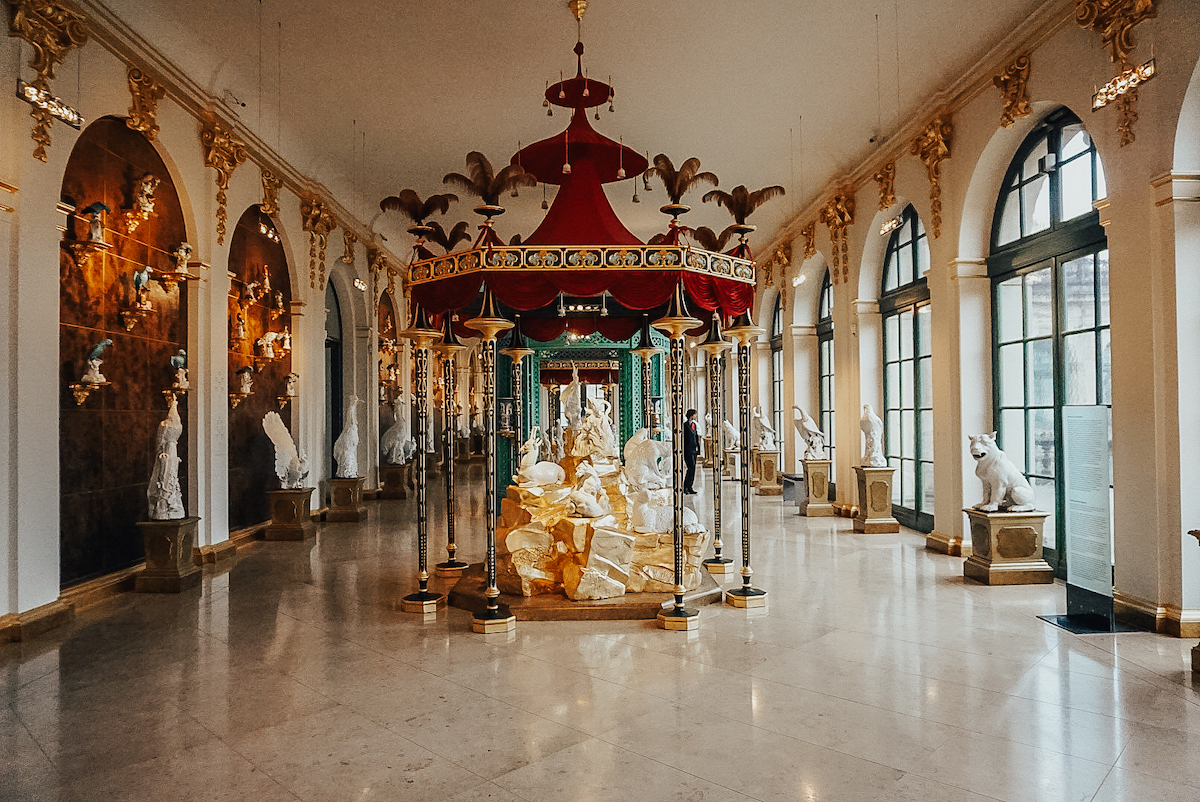
I should also note that the Zwinger is home to a Glockenspiel made from Meissen porcelain. It’s quite beautiful, and it plays different tunes throughout the day. It’s actually so nice to hear them play, and the whole palace goes quiet while everyone listens to the bells.
Give yourself half a day to visit the Zwinger. There’s no need to rush!
Tip: You can visit the museums individually or purchase a combined ticket to see all three in a day (which is what I recommend doing).
Tour the Semperoper Opera House
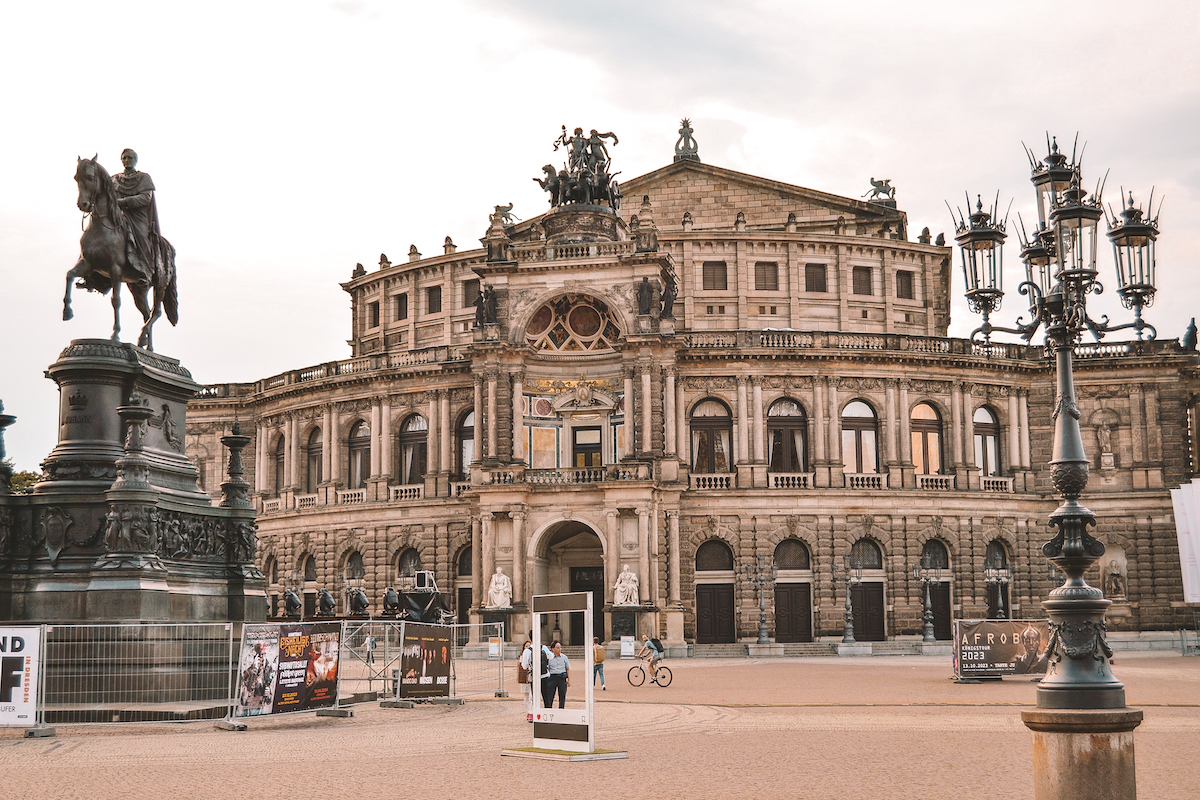
Opera enthusiasts need sign up for a guided tour of Dresden’s Semperoper. This legendary opera house was originally completed in 1841 using designs by the architect Gottfried Semper. The original opera house burned down in 1869 and was subsequently rebuilt … before being destroyed again during WWII.
Known for its incredible acoustics, the Semperoper has been home to the Saxon State Opera for nearly 475 years. In that time, nine of Richard Strauss’ 15 operas premiered here (including “The Knight of the Rose”), as did some of Richard Wagner’s most famous operas (“Tannhäuser” and “The Flying Dutchman”).
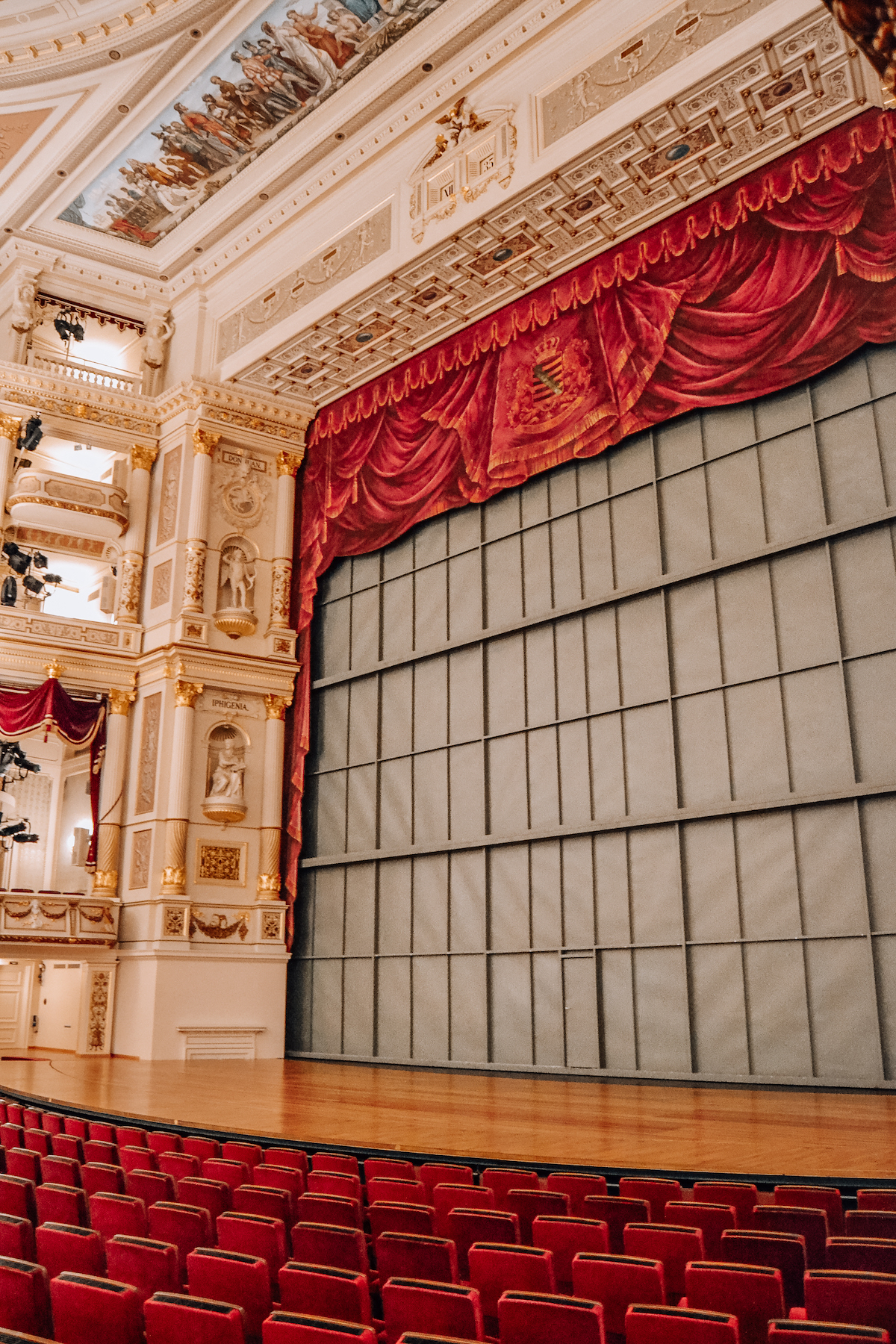
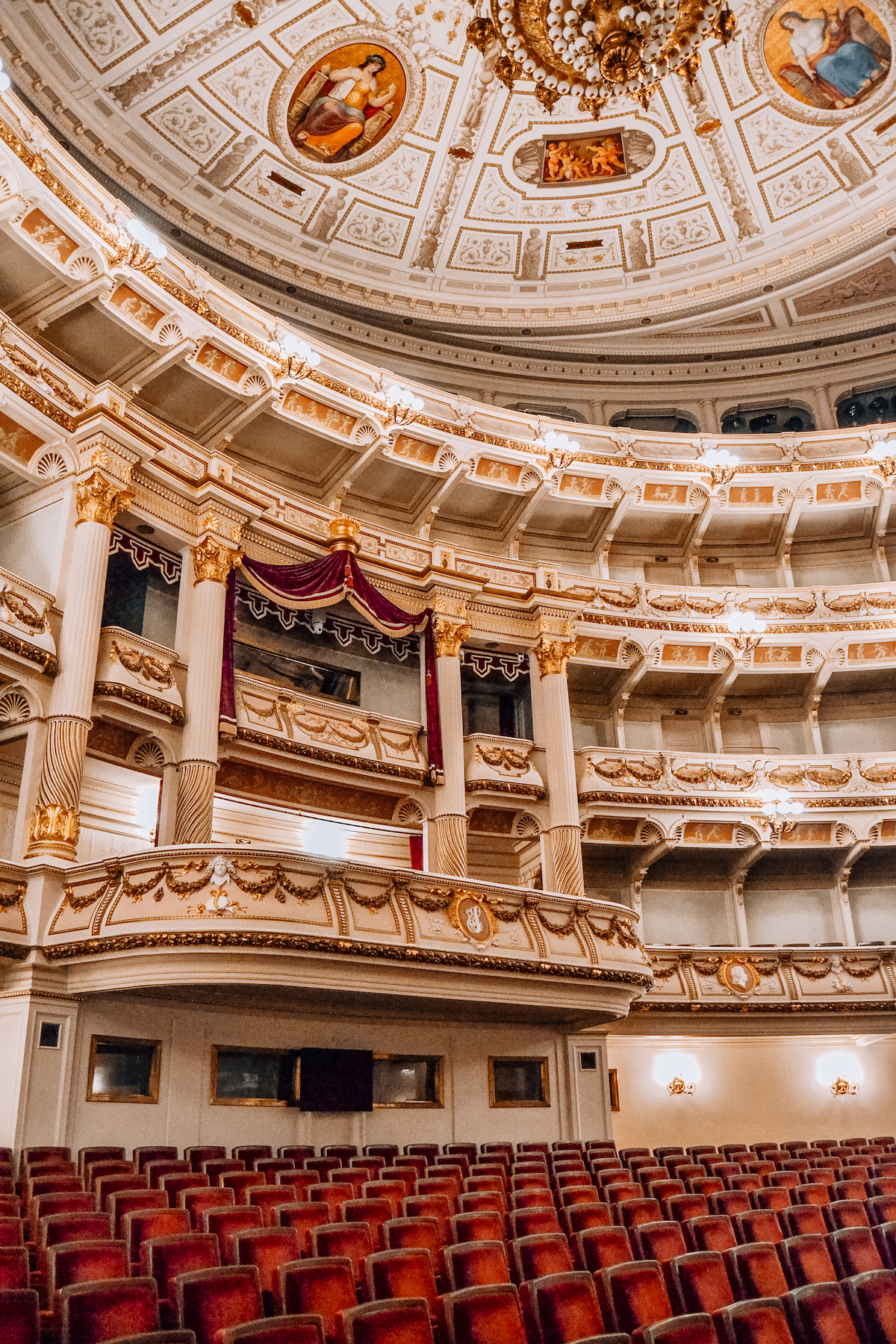
If you don’t have time to book a tour of the Semperoper in Dresden, I still recommend admiring it from the outside. It’s near the Zwinger and is impossible to miss!
See the Dresden Cathedral (Katholische Hofkirche)
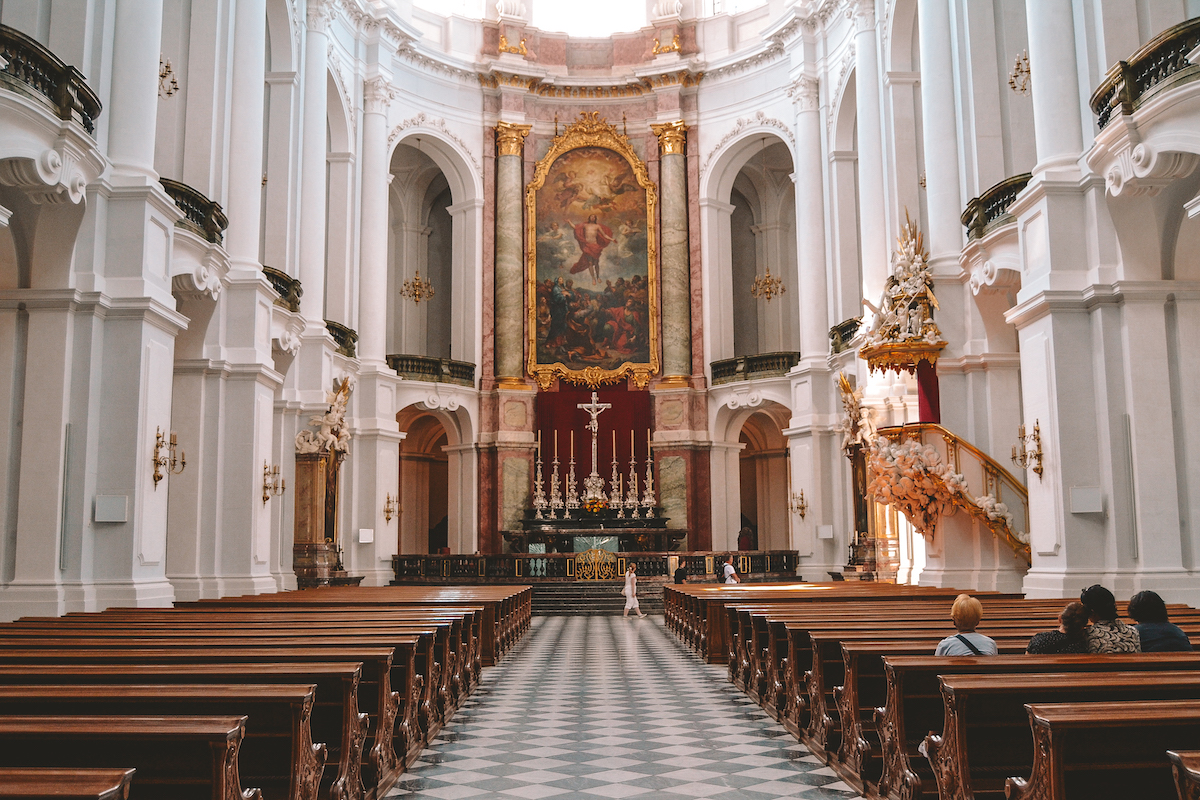
Not to be confused with the nearby Lutheran Frauenkirche (Church of Our Lady), the Dresden Cathedral (Katholische Hofkirche) is a Catholic cathedral that was built next to the Residenzschloss.
King Augustus the Strong built the cathedral when he converted to Catholicism. Although his entire family were Lutherans (the predominant religion in Germany), Augustus the Strong agreed to become a Catholic so he could be crowned king of Poland, a Catholic nation.
Tour the Royal Palace (Residenzschloss)
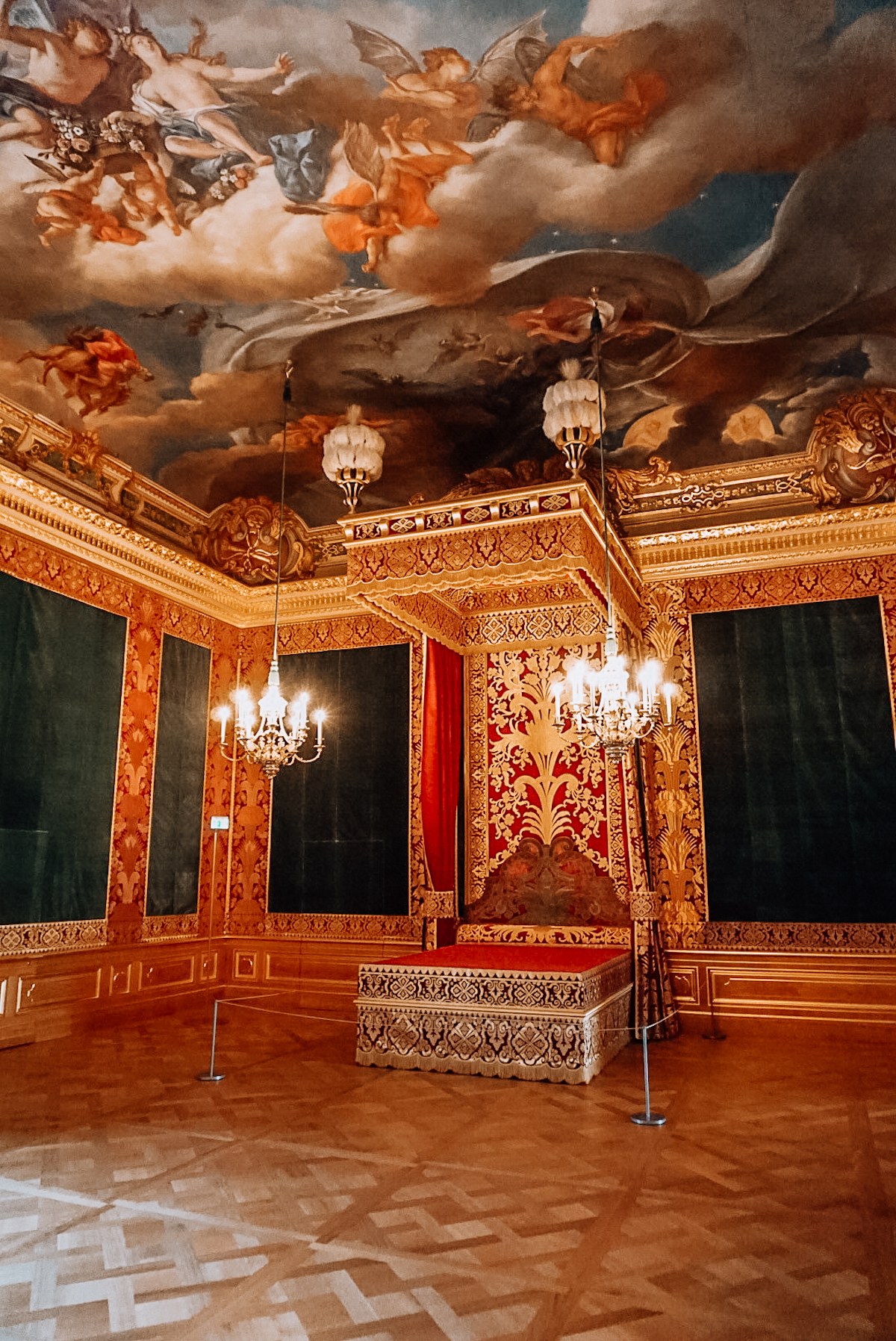
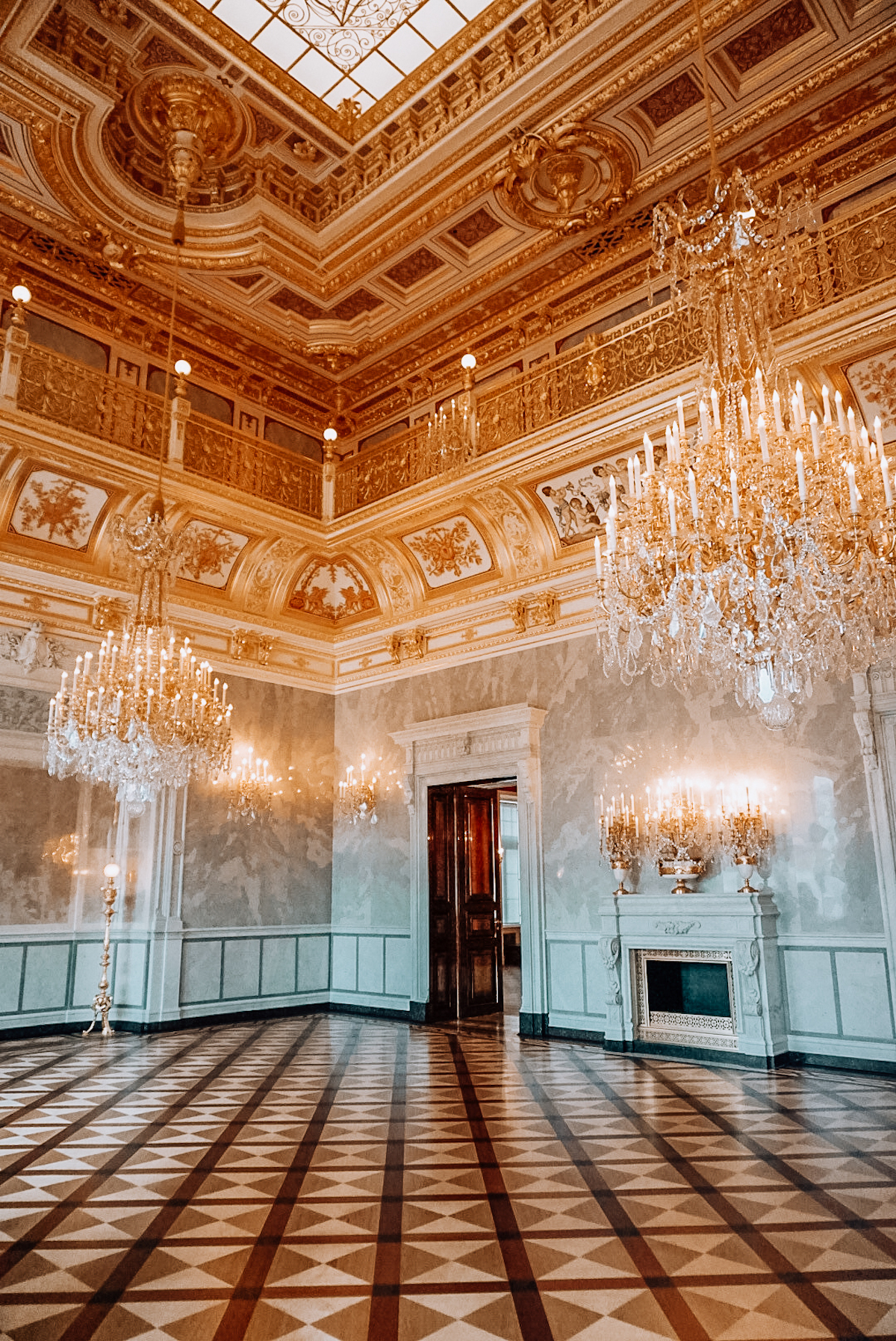
Much to my delight, Dresden is home to more than one palace! Dresden’s royal palace from 1485, the Residenzschloss is now a museum. It was destroyed in World War II and has only just been rebuilt in recent years. (In fact, all that remained of the Residenzschloss following the bombing of Dresden were parts of the Historic Green Vault and the basement.)
Why did it take so long? Because Dresden was part of East Germany, and the government lacked the funds required to rebuild the bombed out castle.
Note that the reconstructed Residenzschloss is NOT historically accurate. When the castle was rebuilt, it was done so using a variety of architectural styles to reflect the many generations of rulers who ruled from within its walls.
The Residenzschloss houses quite a few collections, including an array of Medieval armor and weaponry, the “new green vault” (Dresden’s treasure trove of priceless artifacts), the Turkish chamber, and more. In the summer, you’ll also get access to the Hausmannsturm; it’s a tower with 327 that has an incredible view of the city!
Tip: You have to book a separate, timed ticket to see the Historic Green Vault (which is absolutely worth the money!) – it’s a literal treasure trove!
Admire the Procession of Princes
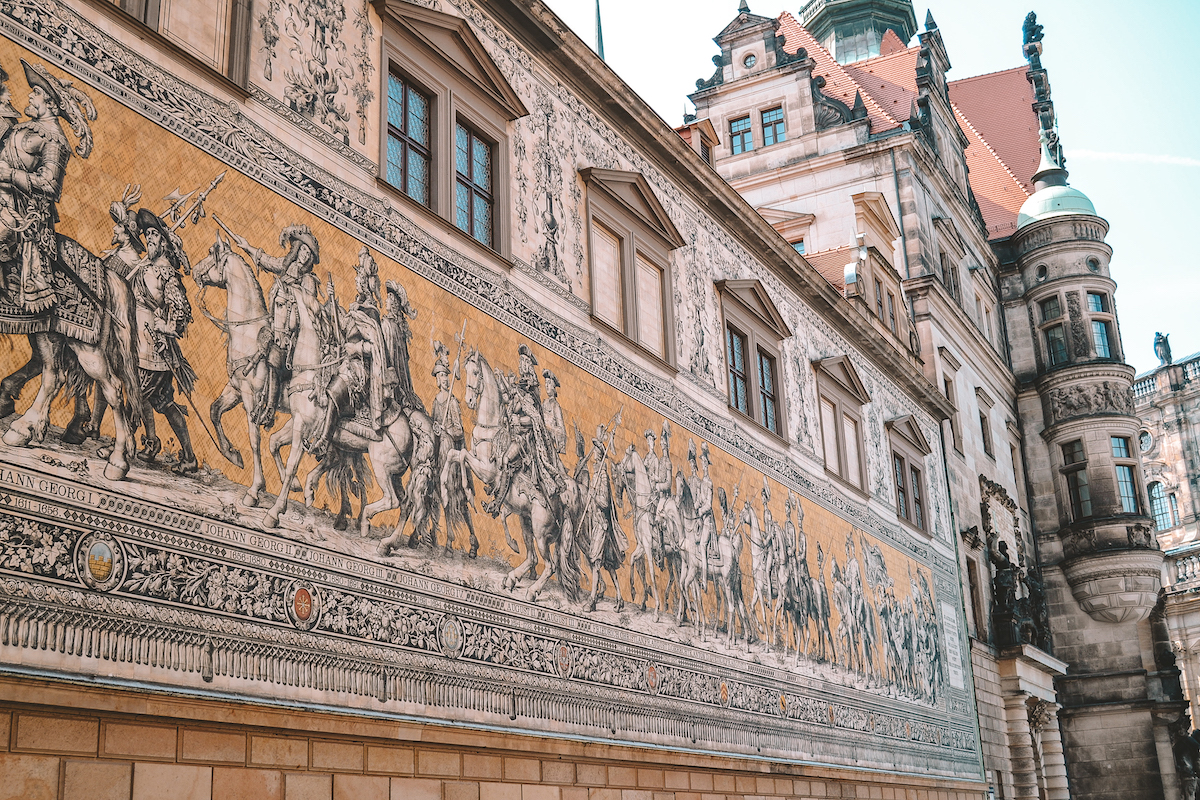
Formally known as the Fürstenzug, this 101-meter-long mural was originally painted in the 1870s to celebrate the 800th anniversary of the Wettin dynasty (Saxony’s ruling family). However, the paint of the mural quickly faded due to exposure to the elements. In the early 1900s, the mural was transferred to Meissen porcelain tiles (more than 24,000 in total!).
The mural is delightful to behold; see if you can pick out each of the 35 margraves, princes, and kinds, as well as the 59 scientists, craftsmen, and farmers!
The Procession of Princes is located between the Neumarkt and the Residenzschloss and is impossible to miss.
Tip: Read my full Meissen guide for more information about its famous porcelain and its history. Meissen is just 30 minutes from Dresden, so keep it in mind for a day trip!
Visit the Former Stables (Stallhof)
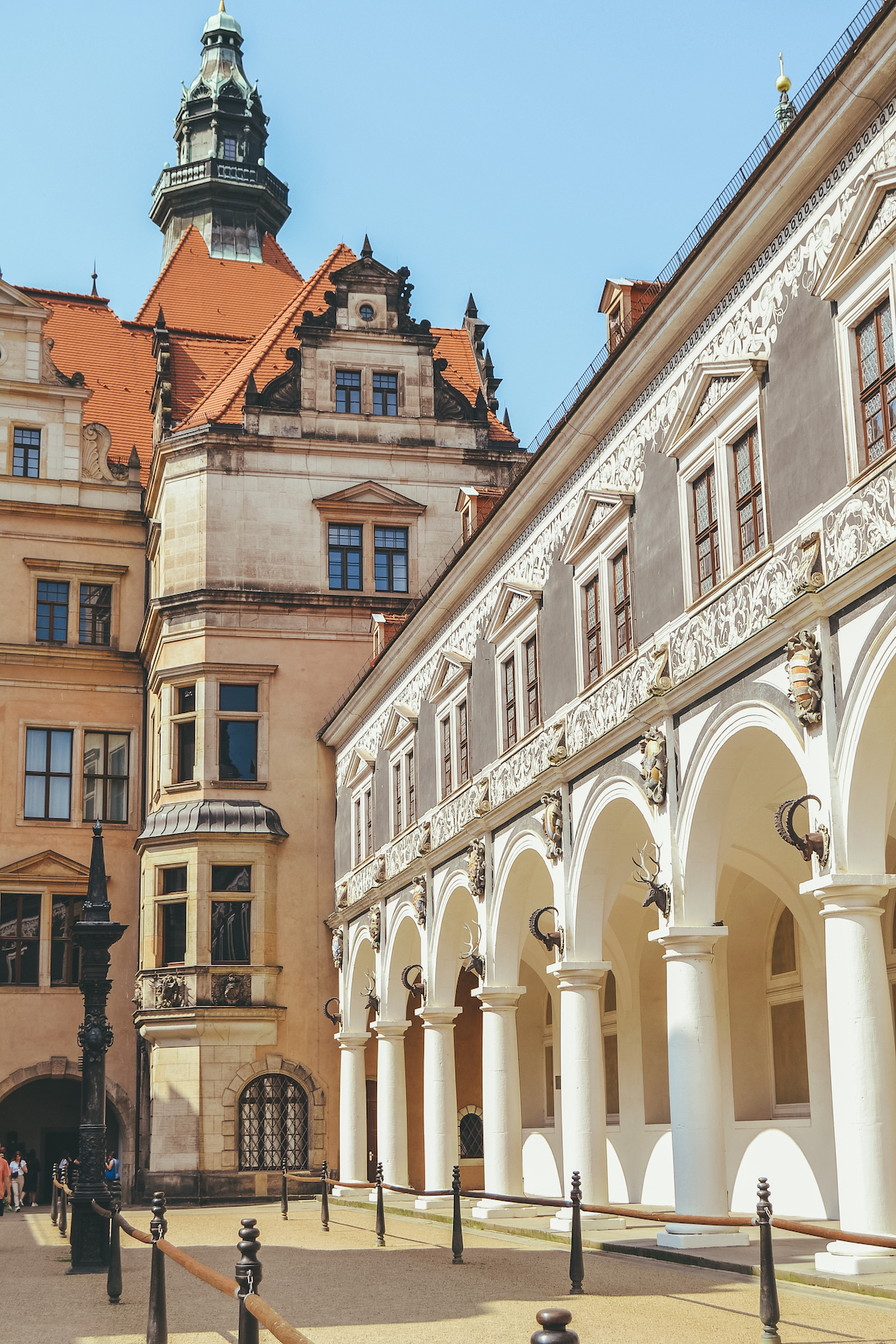
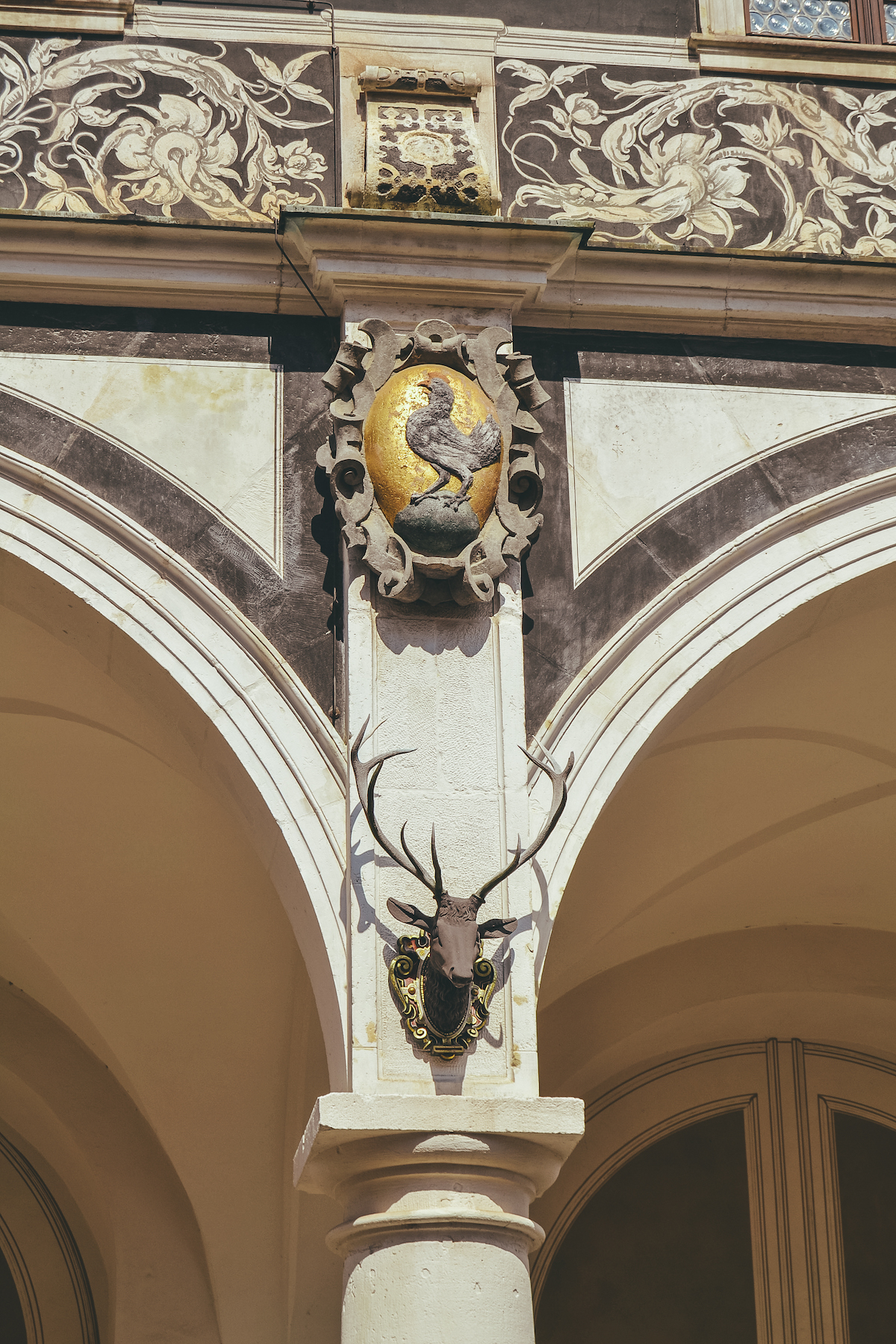
Dresden’s Stallhof (Stall Courtyard) was the site of knightly games and tournaments during the Middle Ages. The stables were completed in 1591 under Elector Christian I and were intended to host tournaments and jousts from the start.
These days, the Stallhof is best known for being a pretty photo opportunity within Dresden’s Old Town, and in December there’s a fantastic medieval Christmas market held here.
Tip: The Stallhof is on the opposite side of the wall of the Procession of Princes, so after looking at the mural simply turn the corner to see the Stallhof.
Enter the Church of Our Lady (Frauenkirche)
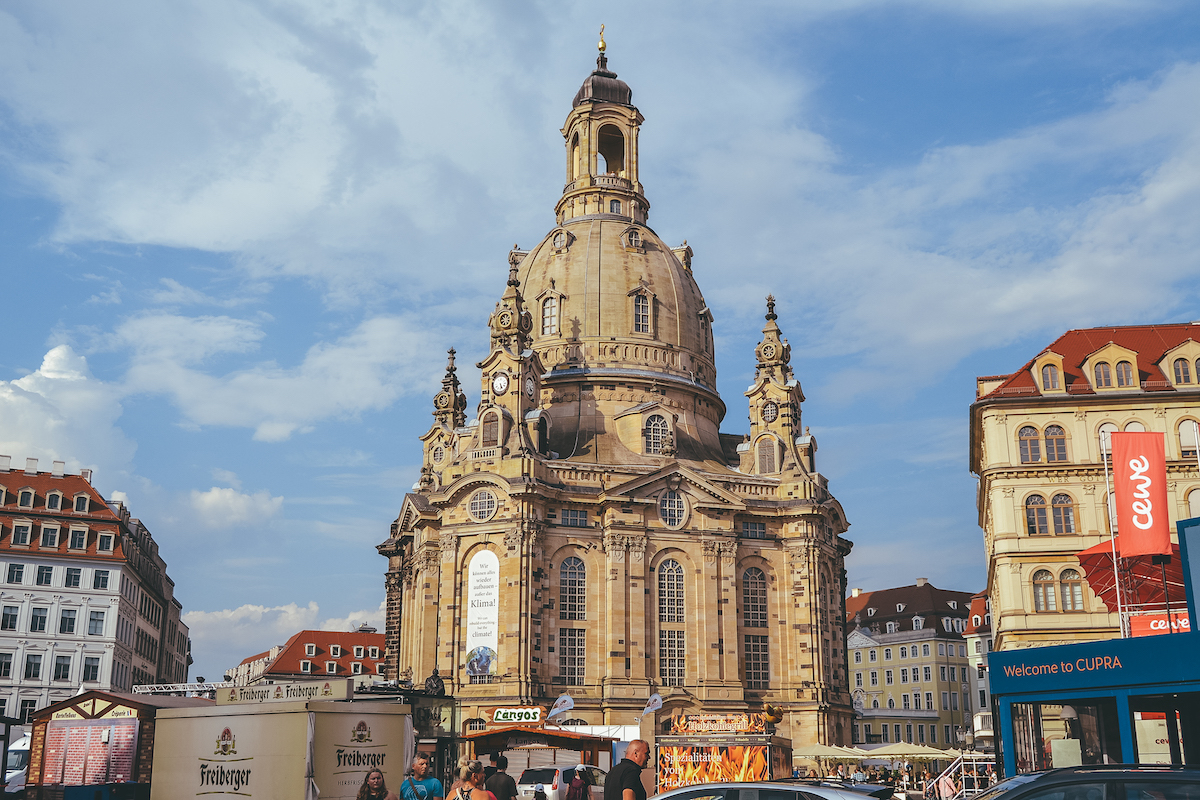
Like much of Dresden, the famous Church of Our Lady was completely destroyed in World War II and lay in a pile of rubble for decades. The rebuilding of the cathedral wasn’t started until 1994 and was officially completed and consecrated in 2005.
Looking at the baroque-style Frauenkirche today, you’d never know it wasn’t centuries old were it not for the smattering of soot-covered stones on its façade. In fact, if you look at the church closely you can tell which of the stones were recovered from the rubble that survived the bombs.
Once inside the Frauenkirche, take a close look at the stunning interior. What initially appears to be priceless marble and stones is actually sandstone that’s been painted to look more expensive than it is. Clever, isn’t it?
If you speak German, definitely sign up for the hour-long tour of the church (there are no tours led in English, but you can get an audio guide in English). You’ll learn lots more about the church’s history on the tour and will be allowed upstairs to get a better look at the altar.
You can also pay to ascend the Frauenkirche’s dome — I recommend climbing the dome early in the morning or close to sunset so you see Dresden at its most beautiful.
Read Up at the Dresden City Museum
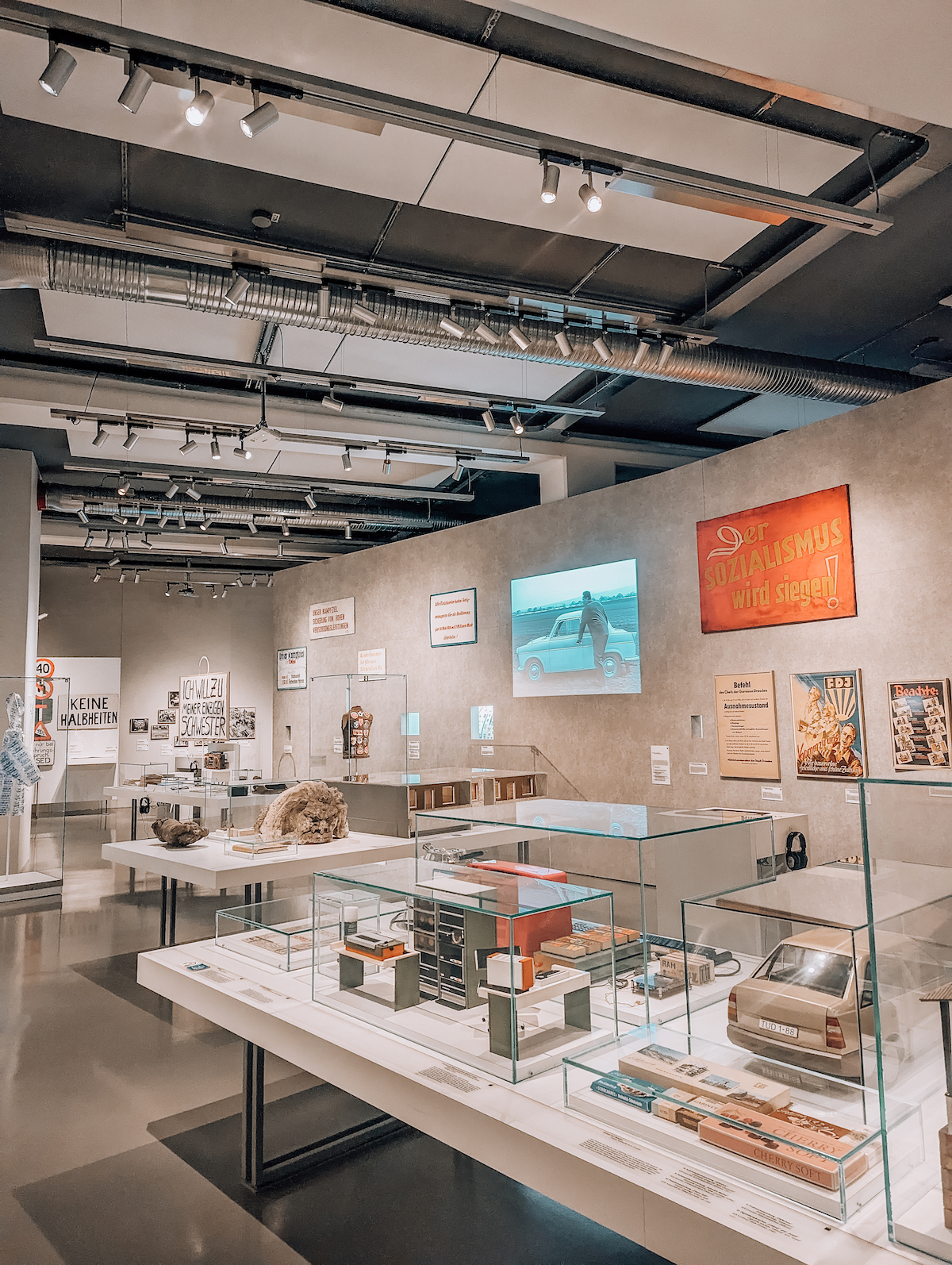
The Dresden City Museum is a compact yet well laid out museum that walks you through the history of Dresden from its founding to the present day. Give yourself around 90 minutes to go through the museum, and grab one of the free audio guides to make the most of your visit.
I thoroughly enjoyed the exhibitions on Dresden’s history as a music center as well as it’s role in the German Democratic Republic.
Tip: Most of the room descriptions are in English and German, but most of the individual artifacts on display have descriptions only in German. If you don’t speak German, I recommend grabbing a free audio guide from the front desk.
Admire the Artwork at the Albertinum Museum

Need a break from historic sites and royal palaces? Spend a few hours at Dresden’s modern art museum, the Albertinum (aka the Galerie Neue Meister), instead! Founded in 1959, it has one of the largest collections of paintings from the early 19th century to the present day in Germany. (If you enjoy artwork showing German Romanticism and Realism, this is the place to come!)
However, the Albertinum doesn’t solely showcase paintings! It also has a large photography, and sculpture collection. I should also note that the building itself is beautiful, which makes your visit even more special.
Enjoy the View From Brühl’s Terrace

Known as the “Balcony of Europe,” Brühl’s Terrace opened to the public in 1814. The terrace offers a gorgeous view of the Elbe River and the Augustus Bridge (mentioned next in this post).
For a taste of the Old World, enjoy a leisurely promenade along the length of Brühl’s Terrace near sunset or sunrise.
I recommend starting at the top of the steps coming up from Münzgasse and ending your walk at Brühl’s Garden (Brühlschen Garten). From the garden, you’ll be treated to yet another picturesque view of the Elbe as well as a view of the Frauenkirche framed by the building of the Old Town.
Tip: Beneath the terrace lies the remains of a Renaissance fortress, which is now open to the public and available to tour. (I haven’t toured the remains of the fortress yet, so I can’t speak to whether or not it’s worth the money.)
Bonus Activity: Visit the Dresden Old Town Christmas Markets!
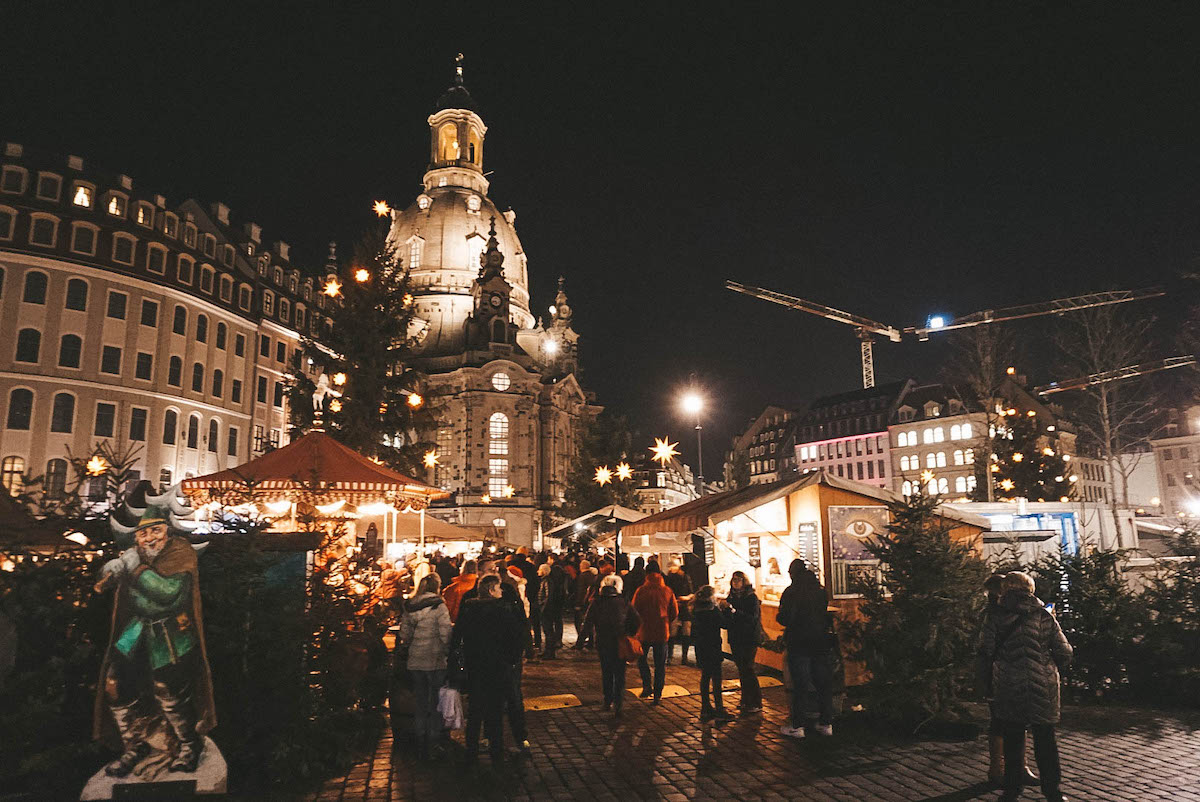
The Dresden Christmas markets are some of the best and most popular in Germany. During Advent, head to the Striezelmarkt Christmas market — it’s the oldest in Germany! The Christmas market in front of the Frauenkirche is also one of my all-time favorites.
However, there are a few more Christmas markets located within the Altstadt, so read my full guide to the Dresden Christmas markets for more information.
Dresden Old Town FAQs
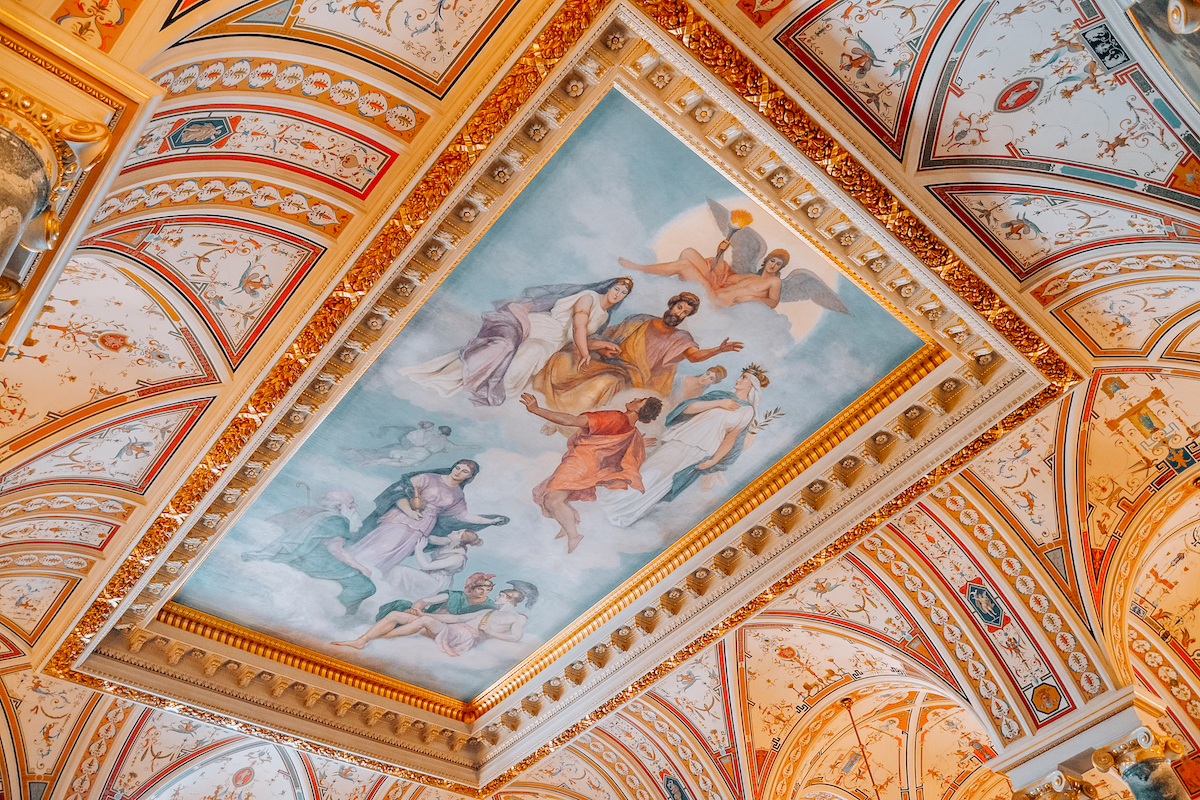
If I haven’t answered your burning questions about Dresden’s Altstadt and the things to do there, leave a comment at the end of this post and I’ll get back to you ASAP!
How do you get from Dresden’s main train station to the Old town?
You can walk from Dresden’s central station (Hauptbahnhof) to the Altstadt in about 25 minutes. It’s darn near a straight shot to the Church of Our Lady (Frauenkirche) if you head down Prager Straße.
Or, you can take the tram to the edge of the Old Town and then enter the pedestrian zone from there. Take trams #3 or #7 to “Pirnaischer Platz” if you want to get to the Neumarkt or the Frauenkirche (Church of Our Lady). Or take trams #8 or #9 to “Theaterplatz” if you want to get closer to the Semperoper Opera House or Zwinger Palace.
What’s the best way to get around Dresden’s Old Town?
On foot! Much of the Altstadt is a pedestrian-only zone so it’s very safe to explore on your own.
How much time is needed to see Dresden’s Old Town?
You can easily fill the better part of two days visiting all of the tourist attractions in Dresden’s Old Town. The Zwinger Palace museums take the better part of half a day to see, as does the full tour of the Residenzschloss. Add on the general sights within the Old Town, and you’re at two days before you know it!
What are the top attractions in Old Town Dresden?
The absolute top things to do in Dresden’s Old Town are:
- Zwinger Palace
- Residenzschloss (Royal Palace)
- Frauenkirche (Church of Our Lady)
- Procession of Princes
- Brühl’s Terrace
Looking for Even More Things to Do in Dresden?
The Altstadt is merely the tip of the iceberg when it comes to things to do and see in Dresden! I have a full guide on what to do in Dresden that shares lots more travel tips for things to do in the area, including the New Town and Grand Garden.
Is Dresden’s Altstadt Worth Visiting? Final Thoughts
Yes, yes, a thousand times YES! Dresden’s Old Town is one of the most beautiful in Germany, and it’s a place I recommend to my friends and family. Dresden will not disappoint you, so go ahead and pop it onto your Germany itinerary!
Don’t forget to follow me on Instagram to keep up with my daily adventures in Berlin and beyond!

Comments & Reviews
Outstanding and very helpful.
I have several questions:
1. Will be departing LAX either September 29th or 30th, 2024. Flying to Berlin through London. Two couples. We will have 8 full days to visit maybe 9 if necessary. I wish to take us to Dresden, Meissen and possibly Moritzburg Castle. Do you recommend starting in Berlin or continuing on to Dresden? I know it will be a long day!
I believe we need 4 nights to see Dresden, Meissen and Moritzburg do you agree or disagree and should another sight be added or are we at maximum.
2. 4 nights in Berlin I believe we can see quite a bit. We all like museums. Museum island we would send time here and visit all five concentrating at the Pergamon Museum, and Neues Museum. I do not believe we have enough time for a day trip to Potsdam.
3. We definitely will visit the Gemaldegalerie. We will stay in the Mitte, stroll and visit your suggested sights. Could you please prioritize them for us.
4. The technology museum jumped out at me do you recommend?
5. Hidden treasures please recommend.
6. Restaurants for good delicious food not touristy.
7. From the airport is there a direct train to Dresden or do we have to go to the train station in Berlin?
8. My wife and I visited Berlin in 2006 and then spent two nights in Dresden. We missed the opera house in Dresden and if not to late would like to see if we could gets tickets for a performance. Do you recommend?
Hi Chris, so glad you found my guide helpful! To answer your questions:
1. I’d start in Berlin and then continue via train to the other destinations. If you’re coming from LA, you’re going to be so jet lagged and that 4-hour journey to Dresden will be brutal otherwise! Also, keep in mind that Deutsche Bahn is prone to delays and I doubt you want to deal with the added stress of a train delay if you’ve just flown from the US.
Moritzburg, Dresden, and Meissen in 4 days is your maximum I’d say. You need a full day for the castle and Meissen, and two full days in Dresden is perfect.
2. 4 nights in Berlin is great! I have a 3-day Berlin itinerary on my site that you can reference should you need help planning your stay. You might want to leave day 4 open as a wild card if Potsdam is of interest to you. The palaces there are some of the finest in Germany and Dutch Quarter is beautiful!
3. Are you referring to the Gemäldegalerie in Berlin or Dresden? If Berlin, check out my Berlin itinerary for my top recs (https://tallgirlbigworld.com/best-3-day-berlin-itinerary/)
4. The Museum of Technology in Berlin? If so, yes! It’s amazing. If you happen to be in Berlin on the first Sunday of the month, entrance to that museum (and many others) is free and you can “book” your tickets up to 1 week in advance.
5. Again, for Berlin or Dresden? If Berlin: https://tallgirlbigworld.com/unique-things-to-do-berlin-germany/
6. Kanstraße near S-Charlottenburg is almost entirely Asian food. Definitely get some Thai or Vietnamese food while you’re in the city because Berlin has huge Thai and Vietnamese populations. There’s also a Turkish BBQ place I love called Fes (Hasenheide 58) but you must make reservations for it in advance.
7. Trains to Dresden only depart from Berlin’s Central Station (Hauptbahnhof).
8. YES! Dresden’s opera house is considered one of the best in Europe. Well worth it!
Well Claire: We did a lot of the things that you have listed on your blog. We were gone May 14 – May 28, part of which was spent in Dresden. It was absolutely wonderful. We stayed on the edge of Old Town and walked everywhere. I agree, the Zwinger and the Dresden Cathedral are not to be missed. One day we took a day trip to Meissen. That was beautiful also. They have made it so easy to use the tram now with the FAIRTIQ App. Just swipe when you get on and when you get off and if automatically computes the correct fair. No figuring out tickets.
We will definitely be referring to your blog when we go to other places in Germany and across Europe. Thinking about Munich and Nuremberg next year.
I’m so glad you enjoyed your time in Dresden and Meissen, Joe! I haven’t used the FAIRTIQ App before — I’ll have to check it out! I have tons of travel guides to popular German cities (including Nuremberg and Munich!) so definitely check those out and don’t hesitate to ask questions 🙂